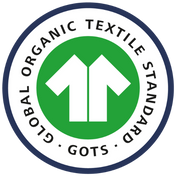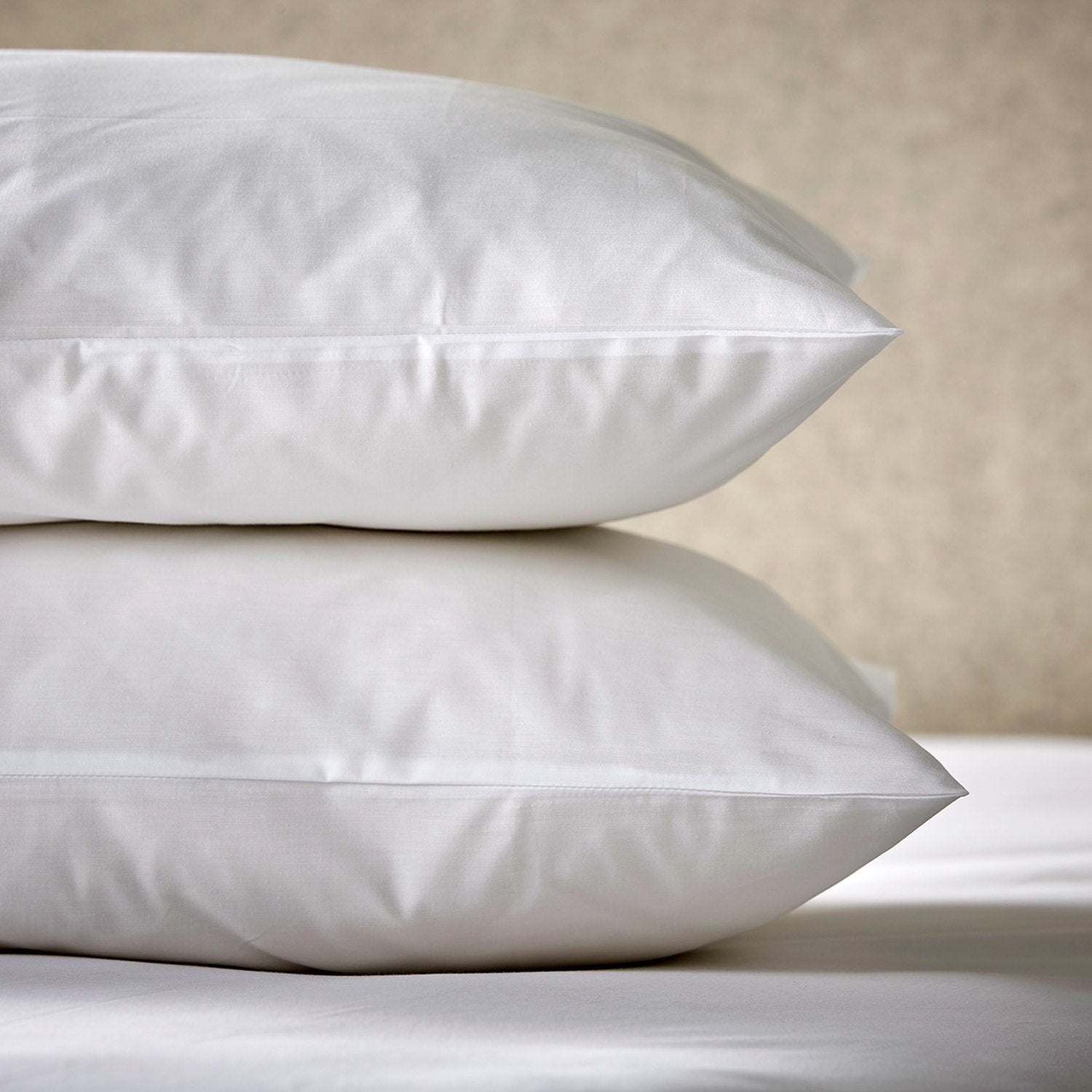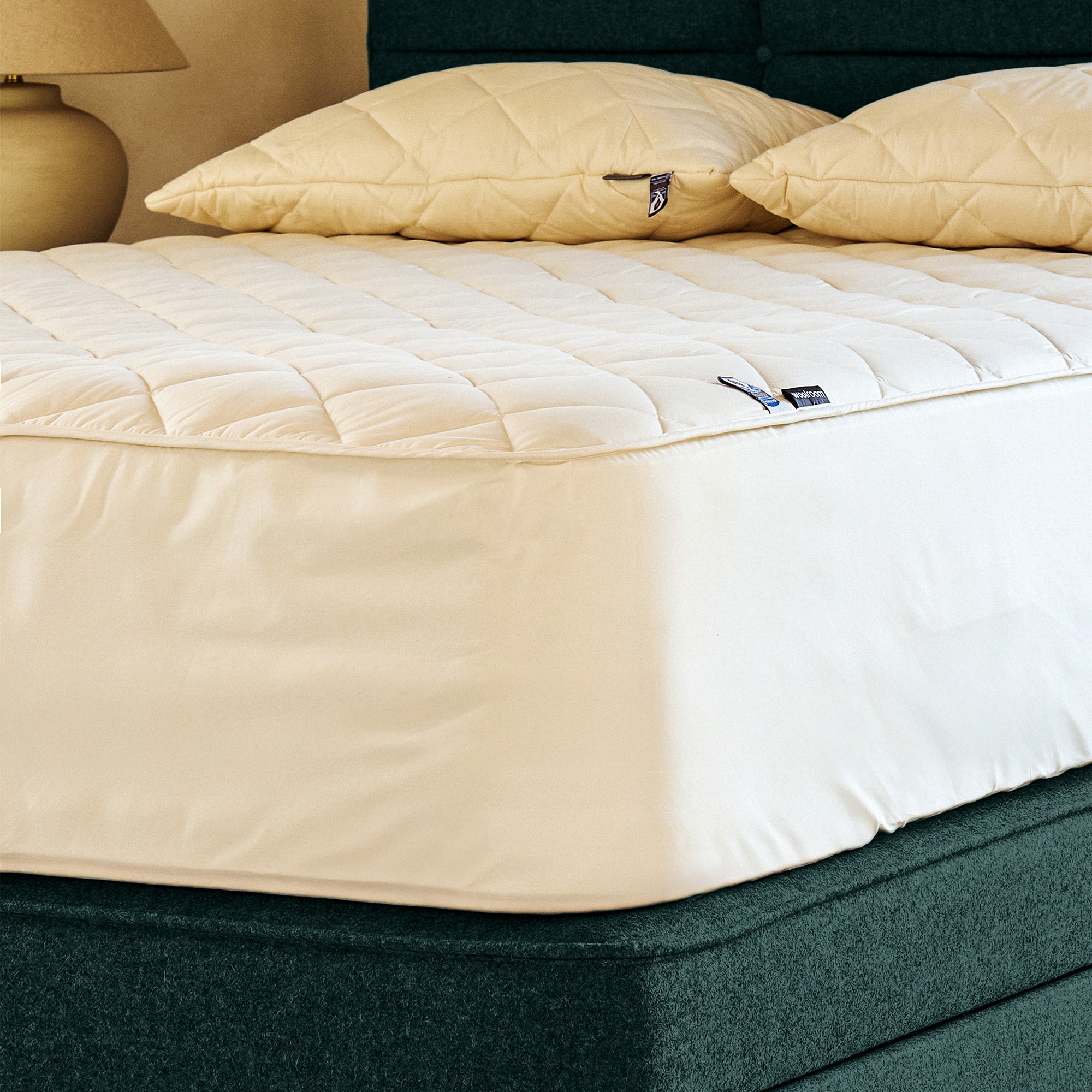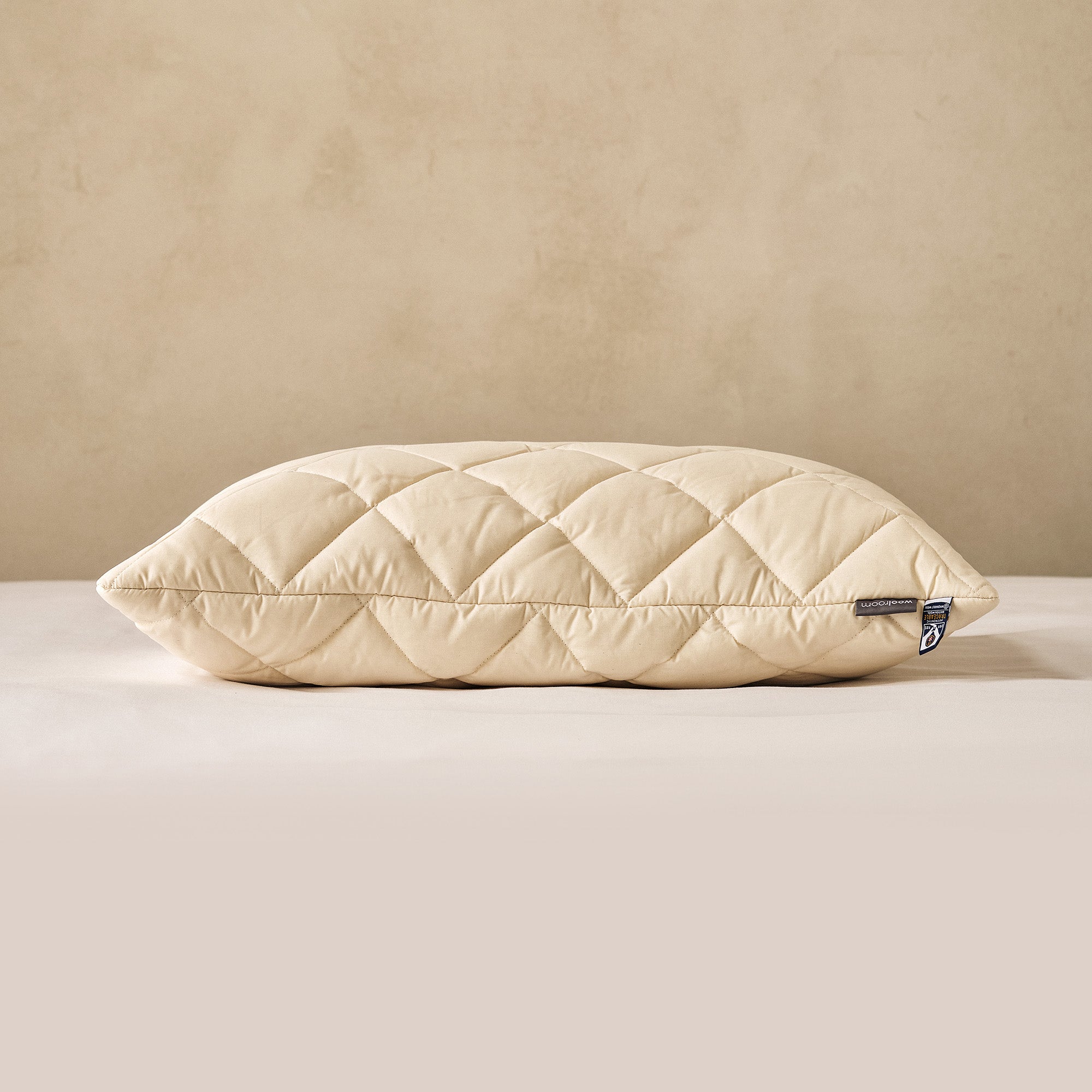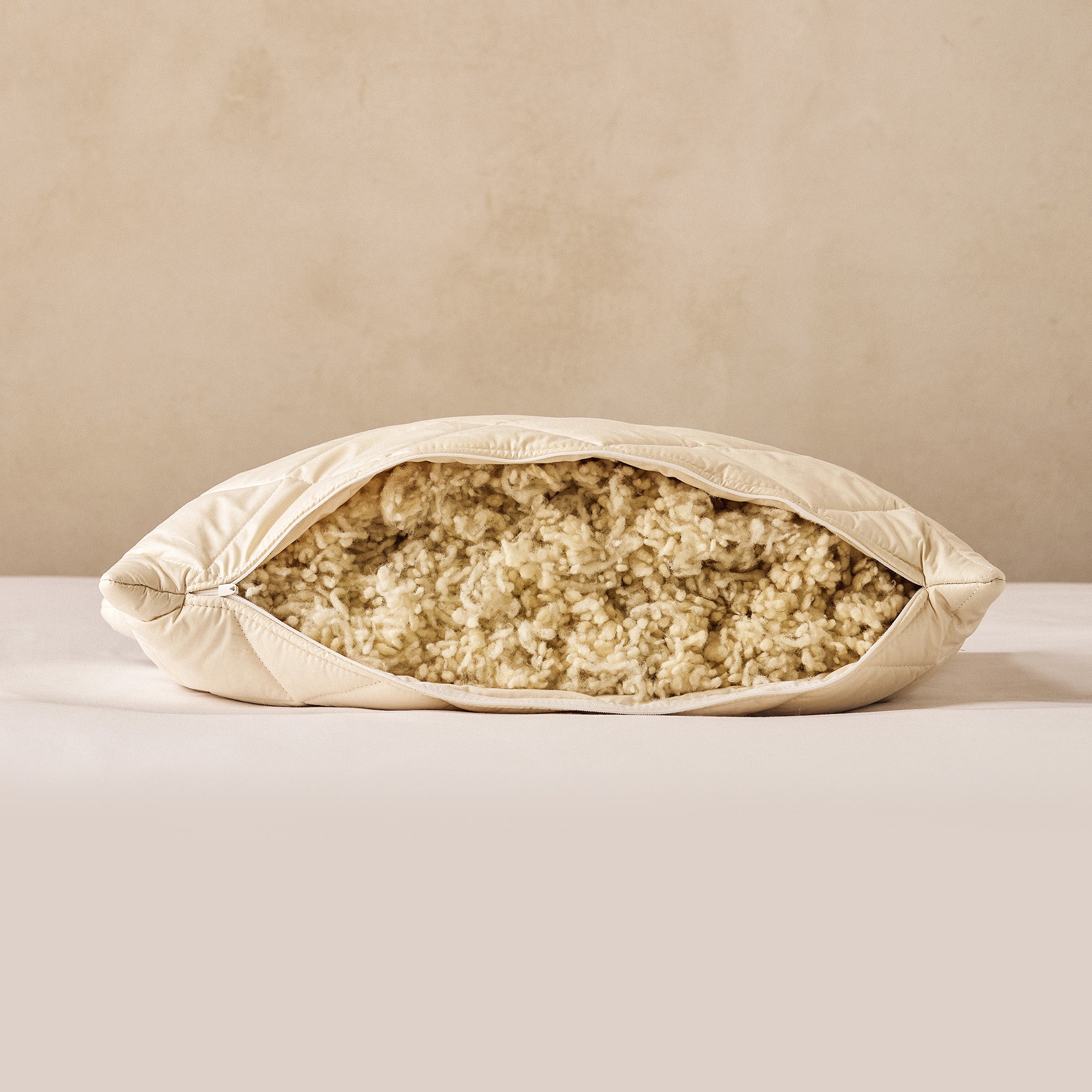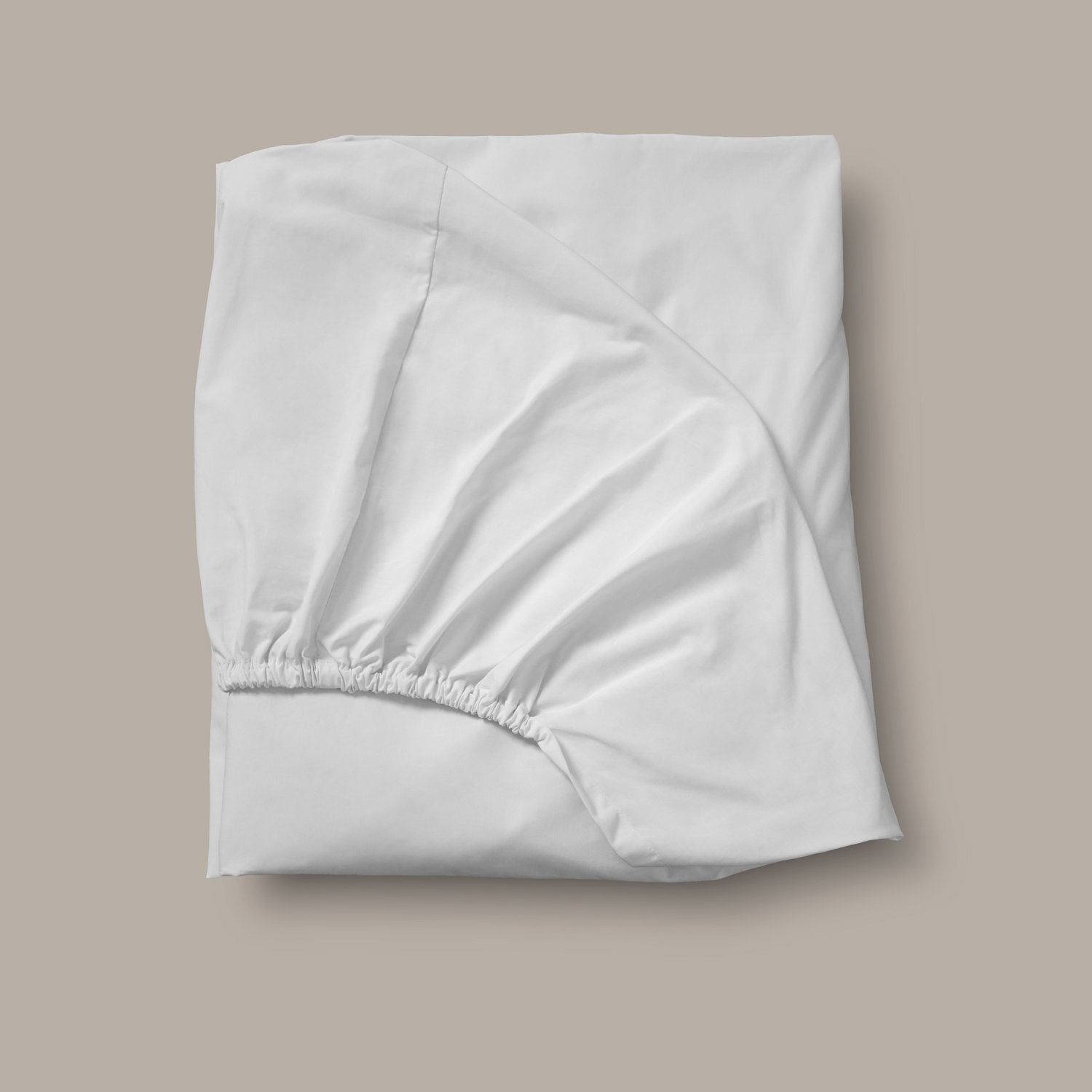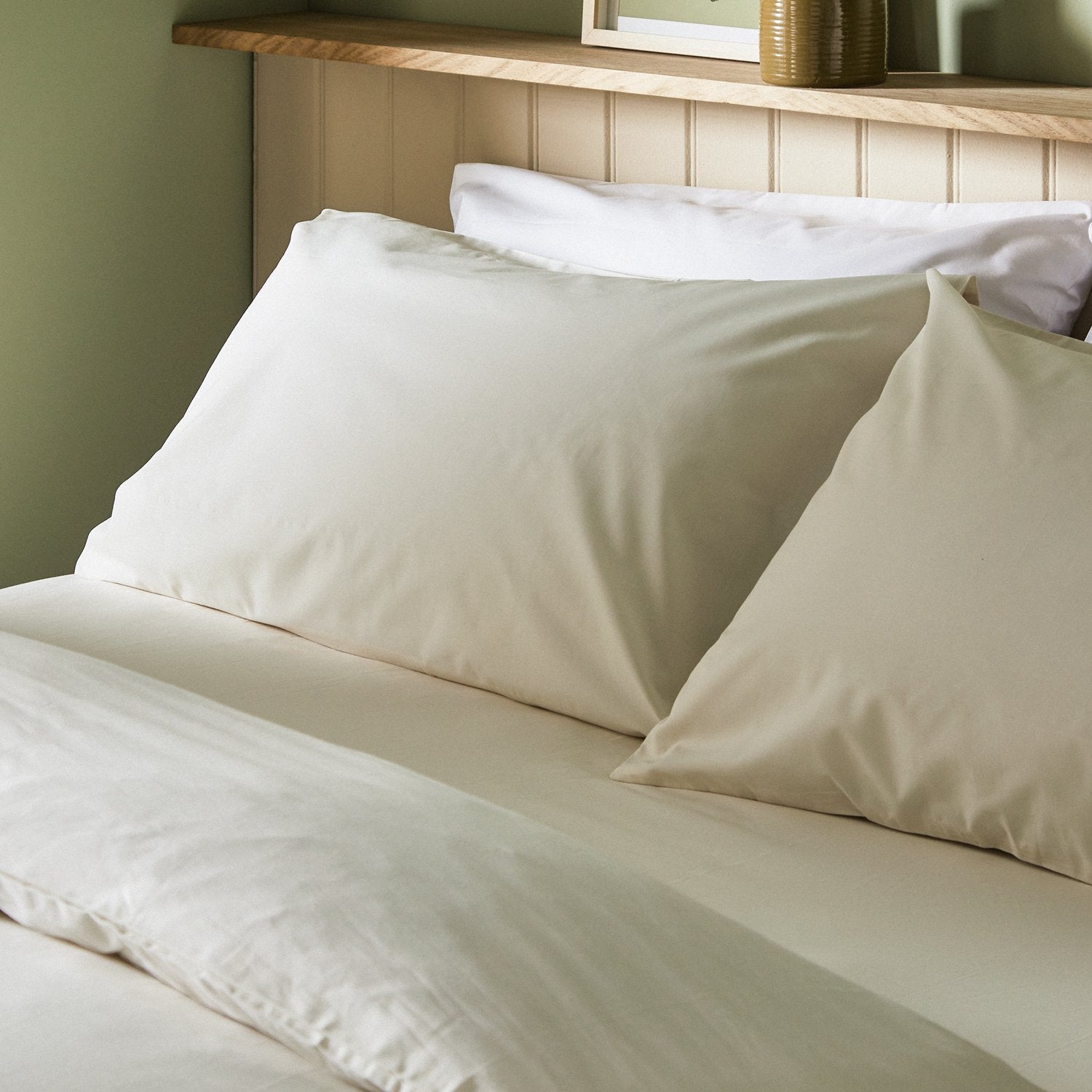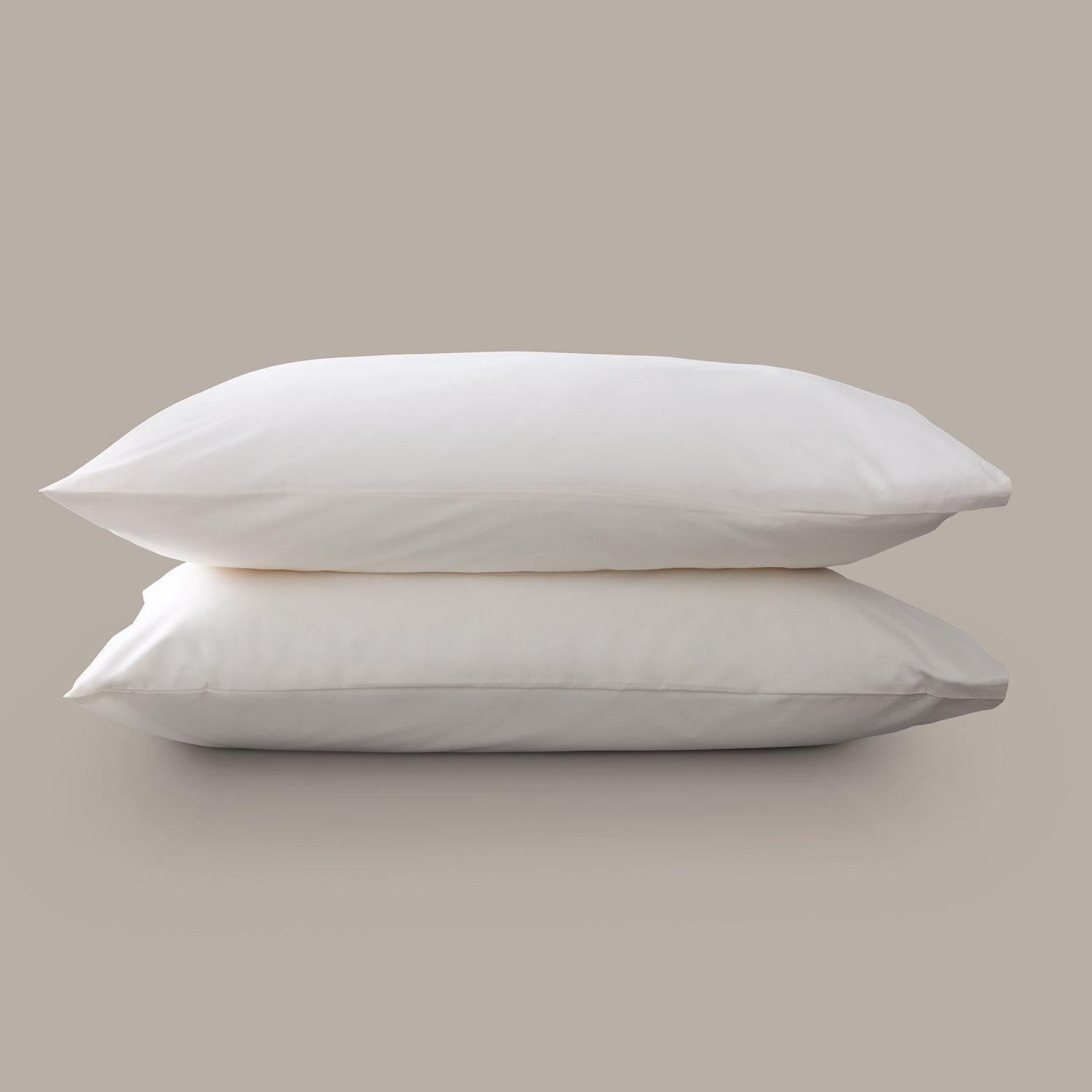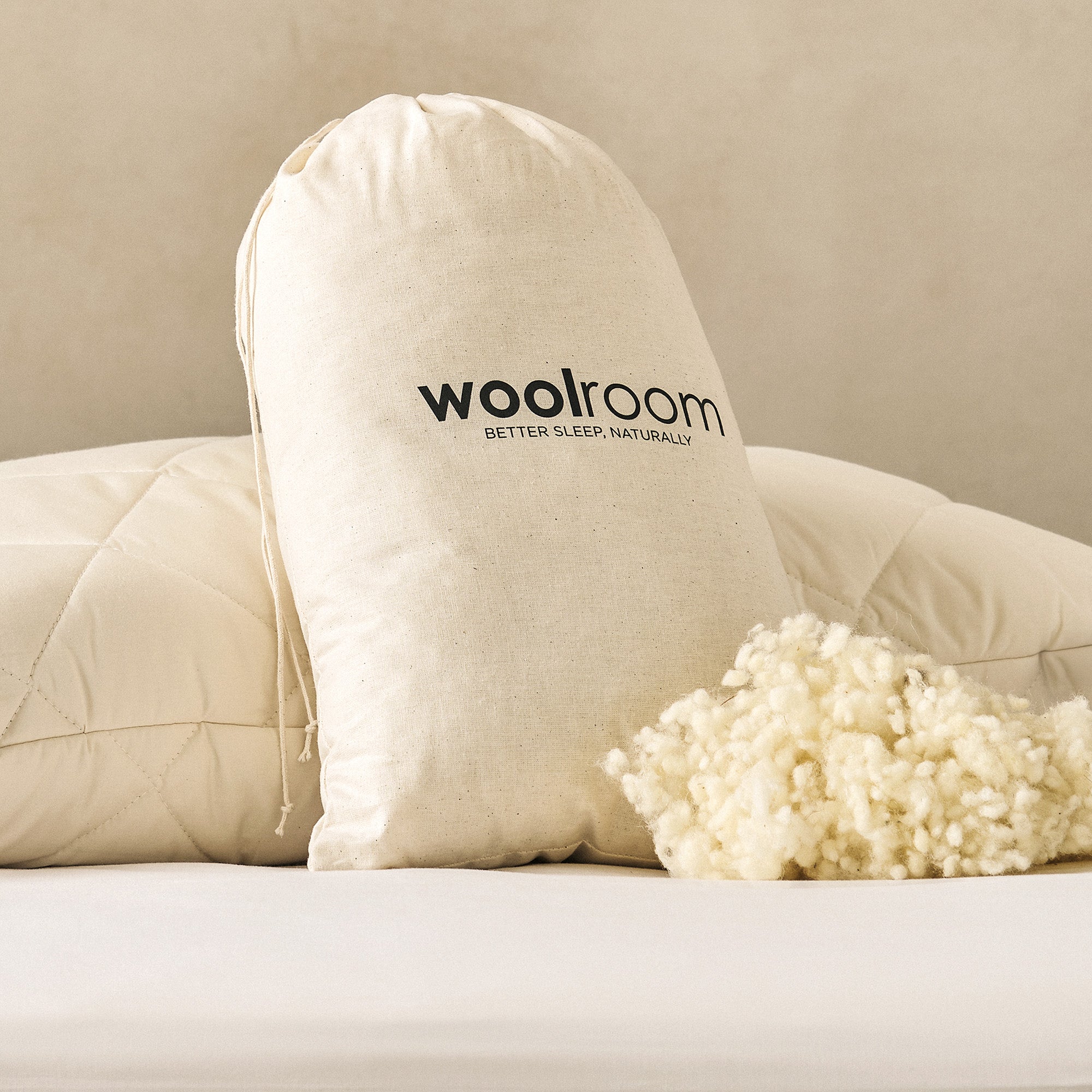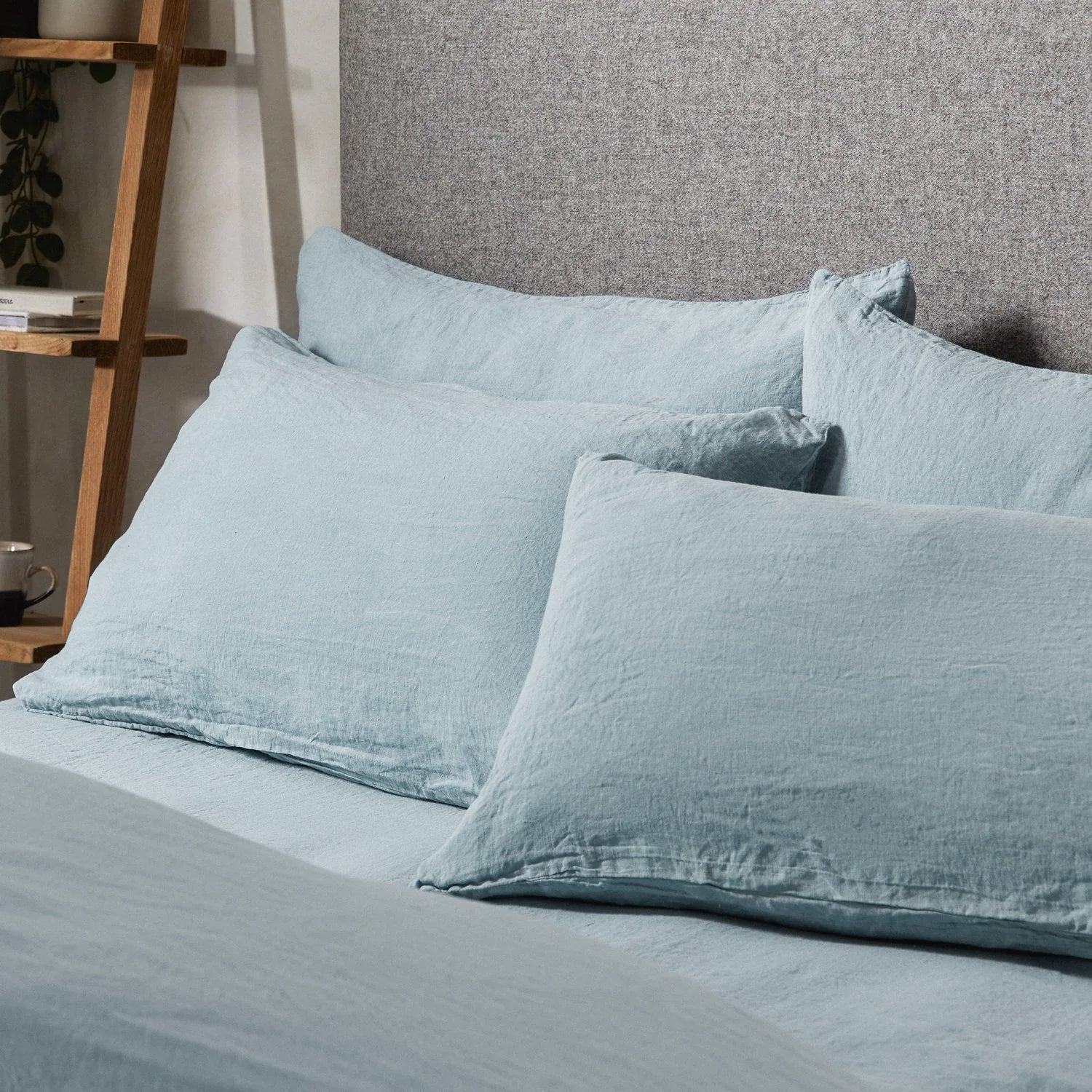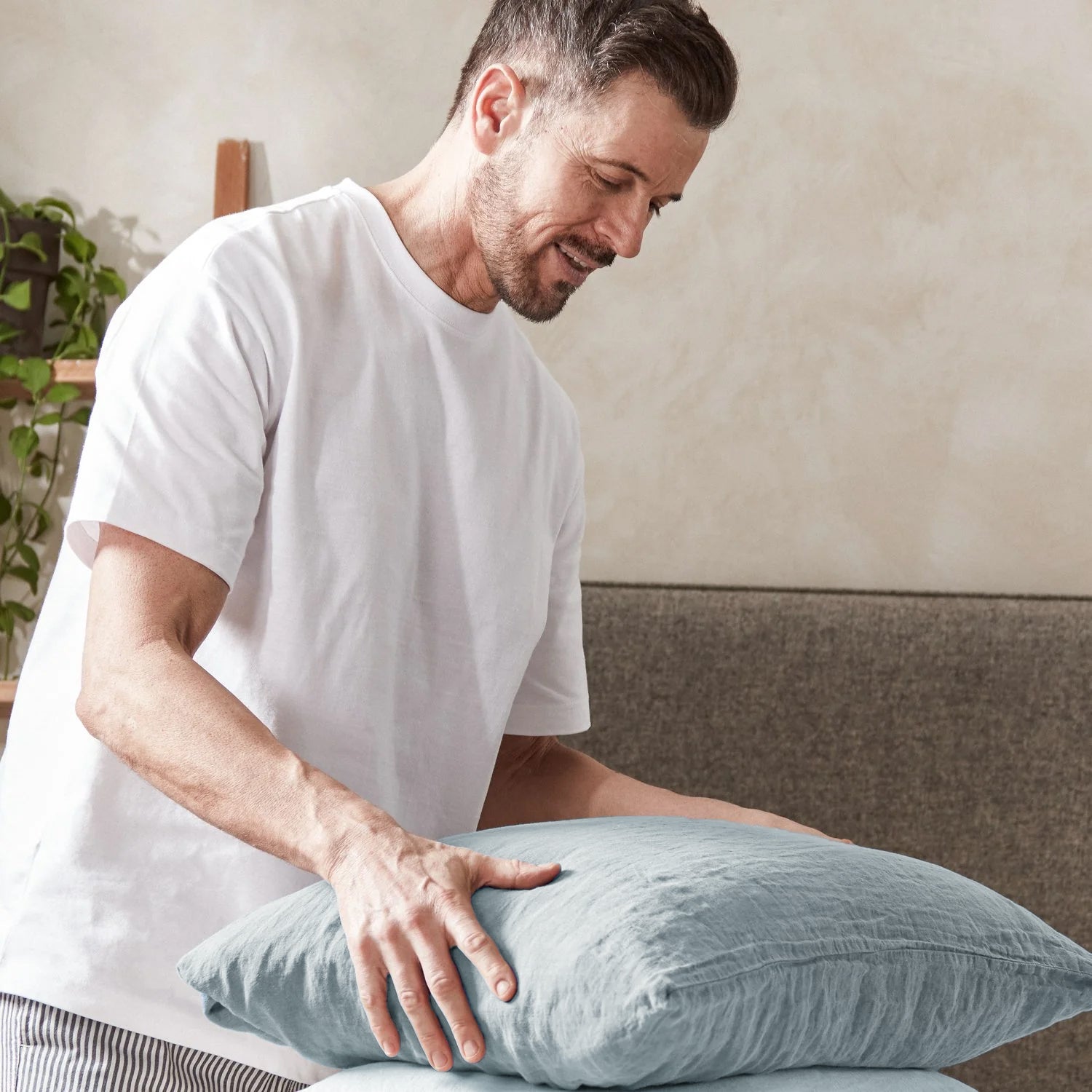When shopping for a new mattress, wool is probably down on the list of materials you are considering. It is far more common for people to think of mattresses in terms of materials like memory foam and whether or not they come shipped in a box. But increasingly, people are showing interest in spending hours each night sleeping on safer, healthier materials, which brings them to the world of wool mattresses.
As a fiber, wool is impressive. But in a mattress, it’s downright magical. The innate properties of wool lend themselves beautifully to higher quality rest, and it’s the kind of thing you have to experience yourself to really understand. We know that a new mattress is an investment, and it’s important to recognize that you have options. Making the best decision begins with understanding the facts, so let’s begin with three reasons why natural wool mattresses deliver on better sleep for you and the whole family.
Wool Mattresses Regulate Temperature To Prevent Overheating
The thermal environment, which is itself affected by things like air temperature, air velocity and humidity, has a direct and significant impact on how you sleep. When you’re too hot or too cold, your sleep suffers—and eventually, so does your health. Unlike synthetic materials like polyurethane and memory foam, which trap body heat, wool’s structure means it naturally regulates temperature.
That’s a key consideration for a mattress, because the body’s temperature fluctuates throughout the night as part of a healthy circadian rhythm. It’s known as thermoregulation, and it’s really important for high quality sleep. A mattress that traps heat can disrupt your body’s ability to warm and cool, which is why you may have yourself unpleasantly awoken in a puddle of sweat or shivering so badly your teeth are chattering.
Wool is different because it can be both warming and cooling. The fiber itself is crimped, which creates tiny air pockets to insulate for warmth. But it doesn’t trap that heat, which is what contributes to sweating. Instead, wool naturally absorbs moisture vapor (up to 30% of its weight without feeling heavy or damp!) and locks it away in the fiber, where the heat is slowly released as the environment dries.
That’s how it keeps us feeling comfortable and dry, regardless of how temperatures fluctuate. It’s a benefit you won’t find in a polyfoam or memory foam mattress, and even natural materials like down and cotton don’t breathe in the same way. When it comes to regulating body temperature effectively and naturally, nothing beats a wool mattress.

Non-Toxic Wool Mattresses Tick All The Boxes For Comfort
For most people, comfort is a driving factor in the mattress selection process. That’s entirely understandable, but it’s important to recognize that comfort isn’t solely related to how a mattress feels when you lie down. It’s also about how you feel throughout the night—are you waking up because you’re too hot or too cold?—and when you wake up—are you stiff or sore? The truth is, comfort is directly related to both temperature regulation and support, which means thinking through the best materials for these considerations. In other words, it’s not just about how soft or cradling a mattress may feel.
We already know that wool is naturally temperature regulating, but the fiber itself is also wonderfully flexible. That’s why it so readily conforms to the curves of your body for truly personalized support. Different body types and sleep styles influence ideal mattress firmness and support from one person to the next, and wool fibers tend to work well across the board. Because they’re so flexible, wool fibers respond quickly when you shift or roll over in the night without the sunken, trapped sensation typical of other mattress materials. Instead, wool mattresses are gently responsive and softly cushioning, with a touch of bounce that makes it easy to change positions. That translates to less disruption throughout the night.
Wool Mattresses Are Hypoallergenic
Have you ever noticed that allergies seem worse at night? Nighttime allergies, which tend to make you feel stuffy and sniffly shortly after climbing into bed, are quite common and directly related to allergens in the bedroom. Dust mites, pet dander, mold, pollen and even down are all common triggers for nighttime allergies, and worse, they can be lurking in your bedding and mattress. Dust mites in particular are drawn to warm, moist environments—and mattresses made with synthetic materials that trap heat are particularly appealing. Dust mites feed on dead skin cells and multiply rapidly. At night, you spend hours sleeping in very close quarters with these little buggers. Aside from being completely disgusting, they also contribute to congestion, itchy eyes, coughing, and other unpleasant symptoms. The same is true of pet dander, mold and mildew. But a wool mattress has an impressive limiting effect on these types of allergens.
Because wool is so darn good at regulating temperature and wicking moisture, it doesn’t create a hospitable environment for things like dust mites, mold and mildew. In other words, it’s naturally hypoallergenic, so it doesn’t trigger allergies the way other materials can. Rarely, people find they have an allergic reaction to lanolin, which is the natural oil found in wool, but that’s more often related to the chemical treatments common with conventional wool processing.
In a mattress, wool is used as a comfort material and natural flame retardant. And here at Woolroom, our wool is never treated with harsh chemicals or bleaches and our natural processing methods ensure that our finished products are free of lanolin. Our wool mattresses have been tested and shown to be free of volatile organic compounds (VOCs), and we’re very proud to be the only natural sleep solution with the Allergy UK Seal of Approval. You really won’t find a better mattress if you have allergies or you’re simply interested in creating the cleanest sleep environment possible.

Enjoy Sustainable Sleep With Wool Mattresses
Beyond their benefits for sleep, wool mattresses are a more responsible choice for the planet. Wool’s eco-friendly credentials are lengthy—it’s naturally sustainable, renewable, biodegradable, recyclable and incredibly durable. But there’s a difference between conventional wool mattresses and wool mattresses. Conventional wool harvesting is often problematic in terms of animal husbandry practices, while conventional wool processing includes chemicals that are hard on the environment. In other words, wool is really only an eco-conscious.
It’s equally important to ensure that any wool used in your mattress was harvested ethically, which makes valid traceability programs key. You should be able to see the farms and animals from which your wool was harvested. Here at Woolroom, our Wool ID® program traces all of the wool we use so that everyone can see our compliance with safety, sustainability and animal welfare requirements. We understand that the best wool comes from happy, healthy animals, which is why we only partner with farms that can guarantee the five freedoms of the UK Animal Welfare Act of 2006. It’s the best way of ensuring that our organic wool mattresses and bedding give you the sustainable sleep you deserve
The Bottom Line On Wool Mattresses For Better Sleep
From our mattress to our bedding, our immediate sleep environment plays a big role in sleep quality. Upgrading to an natural wool mattress doesn’t just eliminate exposure to irritants and allergens, it ensures personalized comfort and natural temperature regulation—and that matters for good sleep. Our collection of wool mattresses combines this incredible fiber with sturdy pocketed coils, organic cotton and latex for all-natural, chemical-free beds that don’t compromise on comfort, support or sustainability. In short, our wool mattresses don’t just deliver on better sleep—they’re downright dreamy.


